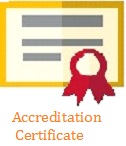Leaching Characteristics of Udipsamment Ameliored by Mineral Soil and Adhesive Polymer
Abstract
Keywords
Full Text:
PDFReferences
ACIAR. 1990. Laboratory techniques for plant and soil analysis. In: L Lisle, J Gaudron and R Lefroy (eds). UNE-ACIAR-Crawford Fund. Department of Agronomy and Soil Sciences, University of New England, Armidale, Australia, and Australian Center for International Agricultural Research. 149 p.
Adani F. 2006. Compost effect on soil humic acid: an NMR study. Chemosphere 65: 1414-1418. doi: 10.1016/j.chemosphere.2006.03.070
Balittanah. 2005. Analisis Kimia Tanah, Tanaman, Air, dan Pupuk. Balai Penelitian Tanah, Bogor. 119 p. (in Indonesian).
Buchmann C, J Bentz and GE Schaumann. 2015. Intrinsic and model polymer hydrogel-induced soil structural stability of a silty sand soil as affected by soil moisture dynamics. Soil Till Res 154: 22-33
Chaganti VN and DM Crohn. 2015. Evaluating the relative contribution of physiochemical and biological factors in ameliorating a saline-sodic soil amended with composts and biochar and leached with reclaimed water. Geoderma 259-260: 45–55.
Faozi K. 2018. Soybean Growth and Yield on the Provision of Banana Midrib Bokashi and Phosphorus Fertilizer in Coastal Sand Land. [Dissertation]. Faculty of Agriculture, Gadjah Mada University, Yogyakarta.
Foth HD. 1990. Fundamentals of soil science, 8th Ed. Michigan State University. John Wiley and Sons. 353 p.
Hardjowigeno S. 2003. Ilmu Tanah. Mediatama Sarana Perkasa. Jakarta. 288 p. (in Indonesian).
Havlin JL, JD Beaton, SL Tisdale and WL Nelson. 2005. Soil fertility and fertilizers. an introduction to nutrient management 7th edition. Pearson Prentice Hall. Upper Saddle River, New Jersey. Pp. 153-157.
ISRIC. 1993. Procedures for soil analysis. In: LP Van Reeuwijk (ed). Technical paper, international soil reference and information centre. Wangeningen. The Netherlands. 4th Ed. 100 p.
Kertonegoro BD. 1993. Upaya konservasi lengas pada tanah pasiran marginal menggunakan tanah lempungan tipe 1:1 dan 2:1. [Paper]. Department of Soil, Faculty of Agriculture, UGM. Yogyakarta. (in Indonesian).
Minhal F, A Ma’az and E Hanudin. 2020. Improvement of the chemical properties and buffering capacity of coastal sandy soil as affected by clay and organic by-product application. Soil Water Res 15: 93-100.
Nursyamsi D, K Idris, S Sabiham, DA Rachim and A Sofyan. 2007. Dominant soil properties affecting k available in smectite dominated soils. J Tanah dan Iklim 26: 13-28. (in Indonesian).
Rajiman. 2010. Pemanfaatan bahan pembenah tanah lokal dalam upaya peningkatan produksi benih bawang merah di lahan pasir pantai Kulon Progo. [Disertasi]. Universitas Gahajah Mada, Yogyakarta. (in Indonesian).
Regar AF. 2015. Rekayasa agregasi tanah pasiran dari gunung merapi dengan penambahan pembenah tanah dan bakteri penghasil eksopolisakarida. [Disertasi]. Universitas Gahajah Mada, Yogyakarta. (in Indonesian).
Rowell DL. 1994. Soil science: methods and application. Longman Scientific & Technical, New York. 350 p.
Soil Survey Staff. 2010. Keys to soil taxonomy. 11th Ed. Washington DC, Agric Handbook Conservation Service. 344 p.
Sunarminto BH, M Nurudin, Sulakhudin and C Wulandari. 2014. Peran geologi dan mineralogi tanah untuk mendukung teknologi tepat guna dalam pengelolaan tanah tropika. Gadjah Mada University Press, Yogyakarta. 227 p. (in Indonesian).
Sun L, CY Ling, LP Lavikainen, JT Hirvi, S Kasa and TA Pakkanen. 2016. Inûuence of layer charge and charge location on the swelling pressure of dioctahedral smectites. Chemical Physics 473: 40-45.
USDA. 2004. Soil Survey Laboratory Methods Manual. In: R Burt (ed). Soil Survey Investigations Report no 42, Vers. 4.0. Natural Resources Conservation Service. Lincoln, Nebraska, pp 167-365, 616-643.
DOI: http://dx.doi.org/10.5400/jts.2022.v27i1.17-25
Refbacks
- There are currently no refbacks.
INDEXING SITE
This work is licensed under a Creative Commons Attribution 4.0 International License.

















